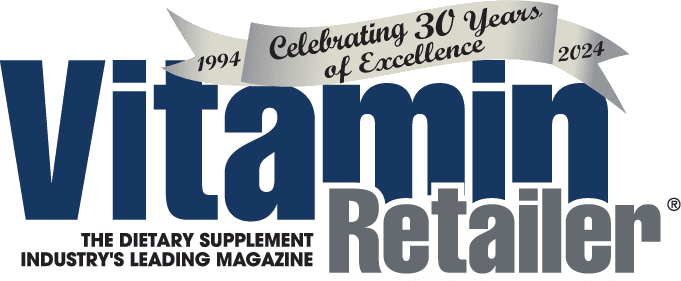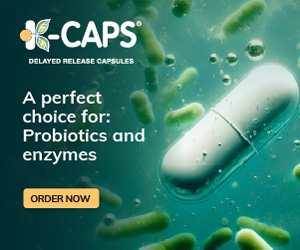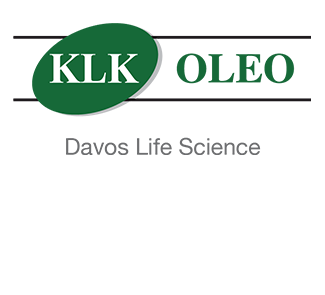Panelists:
Elana Natker, Director of Consumer and Health Practitioner, Communications, GOED, Salt Lake City, UT, www.goedomega3.com
Stephen T. Sinatra, MD, FACC, FACN, CNS, CBT, Healthy Directions, Bethesda, MD, www.healthydirections.com
Jolie Root, Senior Nutritionist and Educator, Carlson Labs, Arlington Heights, IL, www.carlsonlabs.com
Vanessa Pavey, ND, Education Scientist, Life Extension, Ft. Lauderdale, FL, www.lifeextension.com
EFAs (essential fatty acids) are up there with antioxidants as nutrients that consumers know they need. But for most, that’s where the knowledge stops. EFA experts discuss what’s new in this category and what consumers expect from it.
VR: It seems as though there are myriad EFA products to choose from and consumers can be very confused – types, sources, plant-based versus animal based, liquids, soft gels. How can retailers select the most appropriate products for their EFA section—and how can they direct consumers to what is best for them?
Natker: We know from intake data that Americans are getting enough ALA omega-3s, the kind found in plant foods like chia, flax, walnuts and canola. However, 95 percent of Americans (and 80 percent of people worldwide) fall far short of their EPA and DHA dietary needs. That’s why supplementing with fish oil, krill oil or algal oil is necessary.
What consumers need to do—and retailers can help them with this—is to really take a good look at the Supplement Facts panel and see how much EPA and DHA omega-3s are in the product, whether it’s a fish oil (the most common type), krill or vegetarian/vegan omega-3s made from marine microalgae. They can also look at the ingredients to check the source of the omega-3s.
Sinatra: The market for EFAs is relatively confusing from a consumer perspective given the number of choices out there. These range from standard fish oil-derived EFAs to many new forms of vegetarian or vegan options from algae and plants to more unique sources including calamari and krill.
What is best for consumers is not a universal answer. The answer depends on what a consumer is trying to achieve with essential fatty acid supplements. It also depends on their age, health status and what type of a diet they are consuming. Most people consume a diet loaded with omega-6 fatty acids and not enough omega-3s, shifting the inflammatory balance in their bodies toward more inflammation. In this case, a supplement higher in DHA and EPA (generally from marine sources or algae) may be beneficial. Another individual may be healthier overall and consume a higher amount of fish and seafood in the diet and thereby not need as many of the omega-3s. For this individual, a product that contains some of the other EFAs, including omega-7s and omega-9s, may be beneficial.
Someone looking to support heart health may require a more balanced product with DHA and EPA, while another person looking to support cognitive function and memory may need a product higher in DHA. Calamari is a great source of both and has a richer amount of DHA while providing adequate amounts of EPA.
An individual may have dietary restrictions, such as kosher, halal, vegetarian and vegan. Catering to the needs of the consumer by offering products that meet these attributes is essential. Flax, chia, ahiflower and other plant-based omega-3s may fulfill the needs of specific consumers. However, some research indicates that plant-based omega-3s may not be efficiently processed into the omega-3 EFAs needed by the body (DHA and EPA), in which case an alternative source such as algae-derived omega-3s that are available as preformed DHA and EPA may be a good choice.
Another important attribute for consumer acceptance is taste and texture. For ease of use, soft gels, liquid caps and other standard formats may be best. A limitation here may be that consumers need to take multiple pills to get the right dose. EFA gummies have also proliferated; however, the load limitations of gummies may not be conducive to getting an effective amount of EFAs. Flavored liquids and smoothie like products that are rich in EFAs are another option for consumers that don’t mind taking such dosage formats. These products will likely need to be refrigerated once opened unless they are packaged in single serving containers. Thus, keeping a variety of products on hand that meet the needs of a particular retailers’ customers may be the best option.
Root: When it comes to omega-3s it makes sense to provide both marine and plant-based products. The science is still suggesting that EPA, DHA and to a lesser extent ALA are the active components that produce the biggest benefits. With fish-derived EPA and DHA leading the field in published studies and strength of benefits retailers should be looking for medically relevant doses of 500 to 4,000 mg of combined EPA and DHA or of DHA or EPA alone.
Pavey: Important dietary essential fatty acids include linoleic acid (LA), alpha-linolenic acid (ALA), and gamma-linolenic acid (GLA). These come from plant sources. LA and GLA are omega-6 fats. LA is found in vegetable oils like sunflower, corn and canola oils, to name a few. GLA is obtained from plant seed oils like borage, evening primrose and black current. Since omega-6 fats are typically abundant in the diet, the concern is consuming enough of the omega-3 fats. ALA is an omega-3 fat with flaxseed oil being the richest source.
In addition, many are familiar with the health benefits of the fatty acids from fish oil, eicosapentaenoic acid (EPA) and docosahexaenoic acid (DHA). Humans can make EPA and DHA from ALA; however, only a small amount converts, about 10-15 percent. Typically, to build up blood levels of EPA and DHA that contribute to health, many need to consume EPA and DHA directly from fish oils.
Another aspect to consider is consuming ALA, GLA and the fish oil fatty acids in a liquid or soft gel form. These important unsaturated fats are vulnerable to oxidative damage when exposed to the oxygen in the air. So, whether your customers choose liquids or soft gels, the most important considerations are to close the bottle fully between uses and store in a dark, cool place away from moisture.
VR: What do you deem the most difficult challenges anywhere in the EFA sector and how are they being overcome?
Natker: As consumers, we want our messages in as few words as possible. So, we communicate about “omega-3s” since they are important for health. But what gets lost in the simplicity is that what consumers really need to focus on are EPA and DHA omega-3s—the longer-chain fatty acids that are more strongly associated with heart health, eye health, brain health and prenatal health/infant development. We do ourselves a disservice by shortening the message to just “omega-3s” or even more broadly, “essential fatty acids.”
GOED is trying to overcome this by differentiating EPA+DHA omega-3s from ALA omega-3s, and by pointing out that ALA intake needs are met, but EPA and DHA needs are not. It’s important to note that all omega-3s are good, but the science behind EPA+DHA for heart, brain, eye and prenatal health is much stronger and we are woefully lacking those more potent omega-3s in our diets.
Sinatra: For some of the reasons mentioned, one of the most difficult challenges is to get consumers to consume a healthy amount of EFAs, either through their diet or through supplements. This is the biggest challenge. Another challenge is guiding consumers to the right choice of EFA supplements based on their health needs.
The best way to overcome these challenges is to educate consumers on which EFAs are the most researched and beneficial as well as to provide delivery formats that a broad range of consumers can take.
Pavey: Since humans in general are poor converters of ALA into EPA and DHA, providing vegetarian sources of EPA and DHA can be challenging for some. Life Extension has found a solution in algae oil to supply a vegetarian-friendly source of DHA. We incorporate the concentrated algae oil into a vegetarian soft gel made of tapioca starch and glycerin rather than gelatin.
For others, the fishy aftertaste of fish oil supplements can be off-putting. To assist, Life Extension adds a natural lemon flavor to our Super Omega-3 line and offers an enteric coated formulation.
Another challenge to overcome is enhancing the inflammation inhibiting properties of GLA. Although GLA is an omega-6 fat, it can move down the anti-inflammatory pathways. But if it moves down the wrong pathway it can convert into arachidonic acid and contribute to inflammation. Life Extension’s solution is to add sesame lignans to GLA oil to help inhibit the enzyme that moves GLA down the inflammatory pathway. Combining GLA with sesame lignans is an innovative way to help inhibit inflammation.
VR: What are the most significant developments in EFA science and production/processing technology in the past five years?
Sinatra: Some of the more significant developments over the past several years have been related to the availability of different sources of essential fatty acids, in particular DHA and EPA. Whereas traditionally these have been limited to marine sources (specifically fish), additional sources with greater sustainability have been identified, including calamari and krill, while for those consumers that follow vegan or vegetarian diets, algae-based options are available that help them meet their dietary requirements. The broad range of sources and advances in processing technology have also led to advancements in the ability to deliver these in unique delivery forms. While liquids and soft gels have been present for some time now, emulsions and sachets, as well as liquid capsules and even relatively stable powder forms of these raw materials exist, lending EFAs to be incorporated into a wide variety of delivery systems.
In terms of scientific advancements, more recent research is showing potentially profound effects on aspects of brain health and mental health, as well as uncovering how these fatty acids can even influence the microbiome, leading to the discovery of a broad range of applications in the future, beyond what some of the traditional benefits have been. Science has also been building with respect to the usefulness of essential fatty acids for supporting metabolic health, while the role of EFAs in modulating the inflammatory process is well-recognized.
Pavey: Developments in EFA production and processing technology have been focused on providing the highest quality and purity for oils. Consumers are aware of the contaminants that can come along with sources such as fish oil and want to be able to receive the health benefits of these EFAs without the baggage of contaminants and pollutants. A patented specialized purification process (#US8258330) provides an oil that is not only potent but extremely low in levels of heavy metals, pollutants and contaminants with levels considerably under the maximum levels set by the GOED Voluntary Monograph. Technology now also permits omega-3 concentrates to be extremely low in peroxide value, p-anisidine value and TOTOX, allowing for a pure oil with minimal oxidation and low Gardner color. This additionally allows the oil to have a much more pleasant sensory profile, taste and smell, which provide a better experience for the consumer.
Additionally, because consumers want transparency with their products, Life Extension’s Super Omega line has been IFOS (International Fish Oil Standards) 5-star-rated for nearly a decade and counting. Each lot is independently tested for mercury, lead, arsenic and cadmium and only fish oils that pass their rigid testing, especially for heavy metals, get the IFOS five-star rating.
VR: Please describe how the EFA consumer has changed in the past five years—what are they looking for now?
Natker: More and more, consumers are looking for ways to support a plant-based diet. Since the majority of EPA and DHA omega-3s come from fish or marine sources, as of right now the only purely vegetarian or vegan source of EPA and DHA omega-3s are those made from marine microalgae. There continues to be growth in that area, with land-based algae farms cropping up to meet the increased demand. It’s also worth noting that a canola-based EPA+DHA omega-3 product has been developed by GOED member Nuseed and should be available as an option this year.
Sinatra: Like most dietary supplement consumers, EFA consumers are looking for products that are supported by clinically researched doses of ingredients, along with ingredients that are novel, and delivery forms that are unique and convenient. Additionally, consumers of EFA products are showing interest in attributes such as “sustainable” and “clean-label.” As a result of the current environment, consumers have a heightened awareness of health as well as products and behaviors that are environmentally friendly.
Root: Consumers who follow the science are looking for doses that will raise measurable levels of EPA and DHA using widely available tests like the Omega-3 Index Test. Typically this means 1000 mg or higher daily doses. With plant-sourced EPA or DHA the studies are showing benefits that are just a strong as the fish-sourced omegas, here cost is a consideration, the algal-sourced fats are usually more costly than the fish-sourced ones. But good news for vegans: a study looking at raising omega-3 index levels found that 600 mg of algal DHA raised levels as effectively as 600 mg of fish-derived DHA.
Pavey: Fish oil is still the dominant source of EFA’s in the current market but there has been a rise in demand for plant derived sources. Sources such as black cumin seed, algal and flax sources are growing. These plant-based oils provide the health benefits that EFAs have to offer without the “fishy taste” experience that fish oil may provide for some. With concerns around climate change and ocean health, plant-sourced EFAs provide an appealing alternative to the fish oil market. Sustainability around sourcing for EFAs is a growing concern among consumers. Transparency in both sourcing and quality is important to consumers, along with third-party validation to help differentiate products on the shelf.
Furthermore, consumers are looking for unique and easy ways to incorporate EFAs into their daily routine. Soft gels still lead as the top delivery form in this market, but pill fatigue is real. Consumers want products that fit into their lifestyle and that they can feel good about. Gummies are growing as a delivery method across the board in the VMS space but there are challenges regarding potency, organoleptics and sugar content.
VR: Please discuss anything new from your company in the EFA product sector.
Sinatra: In terms of new concepts from Healthy Directions, there are some current projects that include alternate EFA sources, creative combinations of ingredients, and delivery forms that offer convenience and ease of supplementing with efficacious doses.
Root: Carlson has introduced new flavors in our bestselling liquids, Green Apple in the Wild Norwegian Cod Liver Oil, and Mixed Berry and Peach flavors in the Very Finest Fish Oil. We have a new combination available in both capsules and liquid of omega-3, vitamin D3 and vitamin K2. We offer both DHA and EPA in 1,000 mg single soft gel doses for people looking to boost one or the other and we offer the Maximum Omega 2000 as a triglyceride form in either two soft gels or as a mini easy to swallow soft gel in four per dose.
Pavey: Life Extension recognizes that gummies are a popular and unique delivery system among consumers. However, these come with challenges in formulating, especially within the fish oil market. Most popular gummies are loaded with sugar and provide a too low of a dose of the beneficial EFAs. Life Extension has been investigating a new technology that provides the unique and tasty aspects of a gummy with the beneficial high payload of soft gels. Stay tuned!
VR: Lastly, please discuss your sustainability story.
Natker: GOED believes that protecting our oceans and natural resources is paramount. Maintaining our oceans is not only good environmental stewardship, but also ensures sustainable growth for the omega-3 industry.
Fortunately, most of the fisheries from which fish or other marine omega-3 oils are sourced have either been certified—or are currently pursuing certification—by the Marine Stewardship Council (MSC). Other fisheries are certified by Friend of the Sea, another respected certifying group. Several GOED member companies have also achieved MarinTrust certification, which certifies that their marine ingredients are responsibly sourced and produced.
While GOED cooperates with these sustainability organizations and maintains an active dialogue on sustainability, our main standards-setting role concerns product quality and safety standards that our members agree to meet.
Sinatra: One of the preferred sources of EFAs we incorporate, and particularly of the fatty acids DHA and EPA, is calamari. Given the abundance of calamari and its relatively short life and renewal cycle, this source is highly sustainable and renewable. Calamari are only in the ocean for about 450 days, which limits the potential for contamination. On the other hand, larger fish, especially those that weigh more than 12 pounds, can build up contaminants such as residues of heavy metals and other chemicals.
The calamari oil that Healthy Directions uses is produced from the trimmings that were traditionally unutilized waste products from commercial squid production, making use of a part of the squid that was previously discarded. The calamari oil we use is also certified as sustainable by Friends of the Sea, a non-profit organization whose mission is to conserve marine habitats.
Calamari oil contains a preferred ratio of DHA to EPA, being slightly higher in DHA. While EPA has been recognized as being beneficial for heart health, recent research suggests that DHA is likely just as beneficial as EPA, if not more so for certain aspects of cardiovascular health, as well as benefits outside of the cardiovascular system including support for the eyes and brain.
Root: Every Carlson omega-3 product is closely managed from sea to store, using sustainable fishing practices and nutrient-rich fish. The fish come from deep, unpolluted waters and low-impact fisheries. The fisheries are closely monitored to protect the waterways and the local environment and hold Friend of the Sea (FOS) certifications.
Carlson Healthy Oils are sourced from wild Arctic Cod off the coast of Norway whose populations number in the millions from year to year. Other Carlson omega-3s are sourced from wild-caught small fish, like sardines or mackerel—species whose populations are also reliably sustainable. And every part of any fish caught for Carlson fish oil is used either for either human or animal consumption, so no part of the fish is wasted.
In 2021, Carlson took an additional step to be sure the fish oils were sustainable from the inside out. Since we imported our first omega-3 fish oils from Norway in the early 1980s, we have been dedicated to working with low-impact fisheries using traditional, sustainable methods—and now we’re taking steps toward going plastic neutral. Carlson recently joined IMPACT COLLECTIVE, a group of forward-thinking brands committed to making an immediate and positive environmental impact. Together with IMPACT COLLECTIVE, we are beginning our plastic neutral journey by offsetting the plastic in our omega-3 and children’s products through investments in certified plastic removal projects taking place in our global waterways—the very source of some of our most popular products.
Pavey: Life Extension sources our pure and potent fish oil from South Pacific anchovy using sustainable fishing practices. The anchovy is caught off the coast of Chile in a sustainable fishery that is certified Friend of the Sea and Dolphin-Safe. Within hours of catch, the fish oil is processed for exceptional freshness, which has helped us earn the highest, 5-star rating, from the IFOS program. This independent laboratory specializes in testing and rating fish oils. Five-stars is the highest possible rating that can be achieved and is only given to the fish oil that meets the very strict standards for purity, potency, and quality, which includes testing for heavy metals, radiation, and organic pollutants. VR
Editor’s note: Vitamin Retailer would like to acknowledge Dr. Stephen T. Sinatra, who died shortly after participating in the article. His obituary is on page 14.
Extra! Extra!













